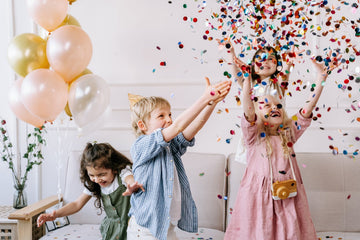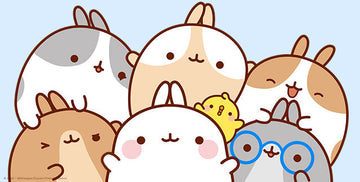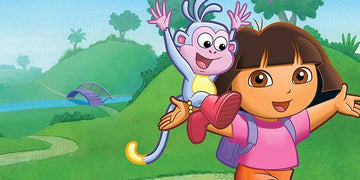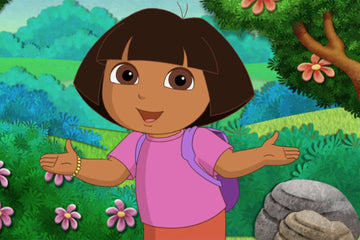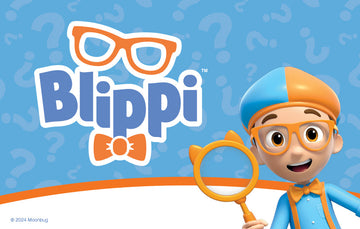Birthday parties have a long and colorful history that reflects changing social practices and cultural traditions. From ancient rituals to modern celebrations, the way kids celebrate their birthdays has transformed significantly over the years. These events have evolved from simple gatherings to elaborate festivities filled with games, themes, and special treats.
In ancient times, people celebrated the births of gods and important figures with grand ceremonies. As these celebrations shifted toward focusing on individual birthdays, families added personal touches like cakes and candles. Today, birthday parties often include decorations, gift-giving, and a variety of activities, showing how society values the special day in a child’s life.
Understanding the journey of birthday parties helps to appreciate the joy and fun associated with them today. Each era brought new ideas and customs, making birthday celebrations a unique blend of history and personal expression that continues to grow and change.
Origins of Birthday Celebrations
Birthday celebrations have a long history that varies across different cultures and time periods. Their origins can be traced back to ancient civilizations, religious practices, and cultural traditions that shaped how these events are celebrated today.
Ancient Beginnings
Birthday celebrations date back thousands of years. The ancient Egyptians are often credited with some of the earliest birthday celebrations. Pharaohs celebrated their birth date as a way to commemorate their ascension to the throne. These events were grand, filled with feasts and ceremonies.
Ancient Greeks also recognized birthdays, but they had a unique twist. They offered sacrifices to Artemis, the lunar goddess, on the day of a person’s birth. The Greeks would also celebrate by making cakes in the shape of the moon and lighting candles, marking the start of celebratory practices.
Cultural Traditions
Different cultures have created unique traditions around birthdays. For example, in many European cultures, birthdays became more common during the Middle Ages. People celebrated by gathering with family and giving gifts.
In Mexico, the celebration of "Quinceañera" marks a girl's 15th birthday. This event symbolizes her transition into adulthood and is celebrated with a big party. Other cultures have their own special customs, showing how diverse birthday celebrations can be around the world.
The Role of Religion and Mythology
Religion and mythology have played a significant role in shaping birthday celebrations. In ancient Roman times, birthdays were often celebrated with religious rituals. People would honor gods and goddesses on these special days.
In some cultures, religious figures are invoked to bless the person celebrating their birthday. This practice reflects the belief that birthdays are not just personal milestones but also occasions for spiritual significance. Each tradition, whether in ancient Egypt, Greece, or Rome, has contributed to the rich tapestry of how birthdays are celebrated today.
Evolution of Birthday Parties Through History
Birthday celebrations have changed significantly over time. They reflect cultural values and economic changes. Two important periods that influenced these celebrations are the Medieval and Renaissance periods and the Industrial Revolution.
Medieval and Renaissance Periods
During the Medieval period, birthday parties were mainly for nobility. Celebrations often included feasting and entertainment. Common people did not celebrate birthdays in the same way, as resources were limited.
In the Renaissance period, birthdays began to gain more importance among the wealthy. They started to hold larger celebrations with music and games. This period also saw the introduction of birthday cakes, which were often round, symbolizing the circle of life. Celebrations were still rare for the average person, who focused mainly on religious holidays.
The Industrial Revolution and Modernization
The Industrial Revolution brought significant changes to how people lived and celebrated. As cities grew, middle-class Americans gained more leisure time. This allowed for more family-centered celebrations.
Modern birthday parties started to take shape during the late 19th and early 20th centuries. The focus shifted to children, making their birthdays special. Birthday cakes, party games, and decorations became popular.
During this time, children’s birthday parties began to include gifts and party favors. This change marked a shift towards more personalized celebrations, allowing children to enjoy their special day. The style of parties also became more diverse, reflecting different cultures and communities.
Birthday Customs and Symbolism
Birthday celebrations include many customs and symbols. Two key aspects are cakes and candles, and important milestones in a child's life. These traditions hold special meanings and make birthdays memorable for everyone.
Cakes and Candles
The birthday cake is a central part of the celebration. It's often decorated with frosting and candles that represent each year of a person's life. When the birthday person blows out the candles, it is said to make a wish. This custom dates back to ancient Greece, where cakes were made to honor the moon goddess Artemis.
Cakes can be simple or elaborate, featuring characters from favorite stories or themes. They are seen as a symbol of joy and sharing. Guests often enjoy a piece of cake as a way to join in the celebration.
Significant Birthday Milestones
Certain birthdays are seen as major milestones. For example, the age of one often marks a special celebration for a child. This is sometimes called a "smash cake" party, where the child is given a small cake to enjoy.
In many cultures, turning thirteen is significant. It marks the transition into teenagerhood, often celebrated with a bar or bat mitzvah, especially in Jewish traditions. Other important ages include sixteen and eighteen, which may involve larger parties to celebrate coming of age. These milestones help families and friends come together to honor the individual's growth and achievements.
The Birth of the Contemporary Kids' Birthday Party
The modern kids' birthday party has its roots in various traditions and cultural influences. Key developments in different regions have shaped how these celebrations are organized today.
The Influence of Kinderfest
Kinderfest is a tradition from Germany that played a big role in shaping kids' birthday parties. Originating in the late 18th century, these festivals were dedicated to children, focusing on joy and fun. Celebrations often included games, music, and cake, creating a lively atmosphere.
As Kinderfest gained popularity, it introduced unique elements like party decorations and themed activities. This focus on children made birthdays special events. Parents started to embrace these ideas, and they slowly spread to other parts of the world.
Today, some typical features of kids' birthday parties, such as party hats and goodie bags, may trace back to this German tradition. Its influence is still visible in many birthday celebrations globally.
Birthday Parties in the Global Context
Kids' birthday parties have evolved significantly across different cultures. In many countries, celebrations are filled with unique customs, reflecting local traditions and values.
For example, in Mexico, "quinceañera" is a significant celebration for a girl's 15th birthday, marking her transition to adulthood. In India, children celebrate with elaborate rituals and cake-cutting ceremonies.
These cultural variations add richness to birthday celebrations. While the core elements, like cake and games, remain universal, the local customs shape how the day is celebrated. Global influences continue to merge, creating a diverse range of birthday party experiences for children everywhere.
Birthday Party Activities and Traditions Over Time
Birthday celebrations have changed a lot over the years. Different activities and traditions have added fun and meaning to these special days. From games to gift-giving, these practices shape how children enjoy their birthdays.
Party Games and Entertainment
Party games have been a central part of birthday celebrations for a long time. Traditionally, kids played simple games like tag or hide-and-seek. As time passed, more organized games became popular, such as musical chairs and pin-the-tail-on-the-donkey. These games encourage social interaction and teamwork.
Today, many birthday parties include themed activities. For instance, kids might have a treasure hunt or a relay race. Hiring entertainers like magicians or clowns became common, adding excitement to the celebration. These activities create memorable experiences that kids cherish.
Gift-Giving and Cards
Gift-giving is a big part of birthday traditions. In the past, presents were often handmade or simple. Parents would give their children something special, like a new book or toy. Over time, store-bought gifts became popular, allowing for a wider variety.
Birthday cards also play a key role in celebrations. Cards often include messages of love and good wishes. They are a way for friends and family to express their feelings. Many kids now enjoy collecting and displaying cards as part of their birthday experience.

